A total eclipse of the sun was predicted (with 100 percent certainty) to cross the United States on August 21, 2017. I believe that this event was essentially my first chance to drive to a total solar eclipse in the United States. Since my youth I have had a bit more than a “passing” interest in eclipses. I have witnessed plenty of lunar eclipses, and have seen several partial solar eclipses. Back on January 4, 1992, I recall driving to the coast near Malibu to see an annular eclipse as the sun was setting. But, skies were cloudy and I saw no sun or moon. On May 20, 2012, the Tempest group and I were in great position after a chase in west Texas to observe an annular eclipse at sunset. There was a total eclipse across the northwestern U.S. on February 26, 1979…but I was a college student, and a responsible one at that. No total eclipse for Bill in 1979. I vaguely remember TV news reports of the eastern U.S. eclipse in March, 1970. I was 11 years old and it was too far for me and my bike, and my parents would find such a trip ill-advised. There was a great solar eclipse at Cabo San Lucas on July 11, 1991, at midday. This eclipse was quite long (more than six minutes), and skies were almost certain to be clear. I had a friend or two witness this eclipse in southern Baja, Mexico. I pondered getting down there myself, either by air or car. But I passed at the opportunity. I didn’t really think I would ever witness a total solar eclipse, and it wasn’t that big of a deal to me.
So, through my years on this planet, I have never actively planned on being smack dab in the path of a total solar eclipse. That is, until the days leading up to this latest one on August 21, 2017. My chase tour company, Tempest Tours, offered an eclipse tour from August 15-22, and I was thinking that I would work that. My “regular” job got in the way of that chance, however. My weather observer boss gave me enough time off to get to the eclipse and back between shifts, but as the event neared, I was resigned to missing it. It was a 15-to-18 hour drive, depending on the target state, and I was unenthusiastic about doing that for a 2-minute event that could be clouded out! However, I learned that my friend “Rook” was going to make the drive up to eastern Oregon. He was going to leave after his overnight work shift in Los Angeles on Sunday morning! Rook planned on sleeping in his pickup truck late Sunday night and early Monday morning in or near the path of totality, near the town of John Day. I could not imagine doing that drive after working overnight, but I guess some people don’t require a lot of sleep! Rook welcomed the idea of having me along to help him make the drive. I had a few days to plan for my first total solar eclipse! Totality would be around 10:22 a.m. on Monday, giving us about 25 hours to make the 15-hour drive.
On Saturday, our plans changed a bit. My friend Jennifer was interested in observing the eclipse. She was contemplating making the long drive from her home in New Hampshire to the totality path in Kentucky or thereabouts. But she was concerned about potential cloudiness and traffic and accommodations, as were many others. The sky forecast was looking great for eclipse viewers in eastern Oregon by Saturday, 48 hours prior to totality, so Jennifer decided to fly last-minute to LAX on Saturday and to join Rook and me on our Sunday drive. We would take my Xterra instead of Rook’s two-seater pickup. This would be the first total solar eclipse for each of us.
Jennifer and I met Rook in Palmdale at 8 a.m. Sunday (August 20) and we stuffed my Xterra with tripods, camera bags, sleeping bags, pillows, suitcases, ice chests, food and drink, and a cot and a tent. There wasn’t too much space remaining for anything else. Rook tied down two (filled) 5-gallon gasoline tanks to the top of the Xterra. If fuel were scarce in eastern Oregon on Monday, then the extra ten gallons could be crucial in getting us back south into Nevada after the eclipse. I needed to be back home in Westlake Village by Wednesday morning at the latest for my next work shift.
There were countless anticipated horror stories with regard to this event. Roads might be jammed for hours (or days!) prior to and after the eclipse! There might be food and fuel shortages. There might be a nightmare traffic jam as millions tried to move from cloudy areas to clear areas for the eclipse. And, cell phone service might not be able to handle the number of customers squeezing into the 60-mile wide path of totality! Our target area, though, between John Day and Fox, along U.S. 395, was in the vast emptiness of east-central Oregon. This area would not be drawing from the largest cities within a few hundred miles, presumably. The road network was rather sparse, so I thought that there might be some problems along U.S. 26, the east-west route through John Day. But I figured that getting into the path of totality should not be problematic, especially since we would be driving into to it well into the evening hours.
From Palmdale we drove north into the Owens Valley via 395, and then took U.S. 6 and Nevada 360 to U.S. 95. That took us north to Hawthorne and Fallon and Interstate 80, near Lovelock. I had never been in this part of Nevada. The drive past Boundary Peak and along Walker Lake was pretty, but we were not interested in spending time for landscape photography, We needed to keep going. We were on I-80 for just an hour or so, and from Winnemucca we turned north towards McDermitt, on the Oregon/Nevada border. We were making very good time — it was still a couple of hours until sunset when we stopped for gas at McDermitt. The next gas was about two hours away in Burns, Oregon. If the gas stations in Burns and John Day ran out of gas, then we might have problems! There is pretty much nothing except Burns between McDermitt and John Day!
As we enjoyed the sunset sky between Burns Junction and Burns along Highway 78, I was contemplating the uncomfortable night outside or in the car, Motels had been sold out for months, and prices were at mega-gouge-levels for the most part along the eclipse path. I was thinking that maybe someone had cancelled at the last minute. Perhaps I should call around to see what the situation is…the worst that could happen is the motel clerk could laugh at me, right?! I checked the motel list for Burns on my phone. I chose the Silver Spur and gave them a ring. Would the desk clerk even answer? Was this the worst shift of his life with the phone ringing every 5 minutes by late-arrivals with no reservations and no preparations?!
Well, I lucked out, as the clerk said to check back at 9 p.m. (in an hour) as he had one room left and he was unable to contact the person who had reserved it, 18 months ago. “Maybe the guy wasn’t even alive anymore,” the clerk said. He had left messages and had not gotten a response, and he didn’t want the room to go unoccupied tonight. We were able to fill up with fuel again in Burns, thankfully —- just a 3-minute wait behind one other vehicle. Burns was about 45 miles south of the path of totality, but since it was the only civilization for hundreds of miles around, it seemed, it was a relief to see that it was not clogged with eclipse viewers. We got to the Silver Spur Motel at 8:30 p.m. The clerk called the person with the last room reservation one more time, and was not able to reach him or her. He sold the room to me for 150 bucks, which was not too unreasonable! The three of us would sleep in relative comfort this night.
Rook wanted to be set up for the eclipse well before the first (partial) coverage, which would be around 9 a.m. He had scoped out a good potential viewing area northwest of John Day, between Fox and Mount Vernon (but a lot closer to Fox). Much of the area was forested and hilly-to-mountainous, and we wanted a wide-open vista in all directions, if possible. It would take nearly two hours to reach the area in mind from Burns, so we got up early again and were on the road north at 6 a.m. The light of dawn indicated a mid-level overcast layer of some sort, which was disconcerting. The skies were “supposed” to be clear or mostly clear this morning! What was this noise? It looked like this was a smoke layer, and it was. It was fairly thin, and it looked like bluer skies were to the north. On the way north to John Day, we traveled through a cold, open farming valley where the temperature was 35F. A little later we were winding our way through a forest along steep mountainsides. We were seeing more and more campsites and vehicles parked near the road. The campsites were filled with tents, and some non-campsite areas were filled with tents, too! Most of the vehicles observed had California plates. This area of the eclipse path was probably the easiest and fastest to reach from most of southern California and much of western Nevada. Fortunately, the traffic at 7 a.m. was still thin, and I breathed a sigh of relief when we were inside the path of totality, near Seneca. But what would John Day be like? A logjam of vehicles? We needed to go through it to get to our special spot. Fortunately, the smoke layer up here near John Day was now to our south, and skies were looking great!
We wound through a couple of mountain valley settlements which were loaded with tent sites, and came into the little town of John Day. Who had ever heard of this dinky place before the eclipse? Not I. It was almost 8 a.m., and traffic was light. We were near the middle of the eclipse path, so we could break down and be stuck, but we would still see the eclipse from here! After a pit stop in town, we made our way west a few miles and then north about ten more to Rook’s open viewing area. This looked perfect, with wide vistas in all directions. There were a handful of folks already parked along the highway in this area, several miles south of the small town of Fox.
We had plenty of time to set up tripods and cameras. The air was cool, around 55F, and the weather was clear and calm. Distant smoke was to the south and west. Totality would be in about two hours, and conditions were looking about perfect. We stopped by an ancient and abandoned wooden house, and I got some pics of it. I wanted to shoot the eclipse with the dilapidated structure in the foreground, but the land owner chased me back to the roadside.
The first and last images in the group above show the increase in eclipse viewers along the road from about 8 a.m. to 9 a.m. Jennifer had her monster 150-600mm zoom lens and camera mounted on one of my tripods, which allowed her to easily take many steady and bracketed exposures. Her “cropped sensor” Nikon allowed the equivalent of about a 900mm telephoto zoom for great close-ups of the total eclipse. Rook had his 70-200mm lens on a tripod, and a GoPro camera set up for a wide-angle video of the moon’s shadow upon the land. My plan was to get some handheld zoom shots at 200mm, and some wide angle shots with the 21mm lens, plus some 4K video with the camcorder. But most of all I wanted to make sure that I allotted enough time to fully enjoy the spectacle without the camera equipment as a distraction. I knew that those two minutes would pass by far too quickly.
I had grabbed some cheap and freebie plastic eclipse glasses at the Silver Spur, but at 9 a.m. I was struggling to free them from between the Xterra dash and the windshield. They had slipped into no-man’s land, where fingers are not designed to fit. After a few minutes of digging I was holding about four parts of the torn glasses between my squished digits. Fortunately, we had made a new friend: Rob, from San Jose. He was just ahead of us on the road, and he had a spare pair for me.
The moon would take a bit more than an hour to fully cover the sun. We were in fairly-relaxed mode, taking occasional shots, as totality neared. The landscape began to darken considerably as about 80-90 percent of the sun became covered by the moon. Rook was taking temperature observations on a regular basis, and it dropped from about 68F an hour before totality to about 59F at totality. (Temperature fell another degree or two just after totality.) The smoke layer that was to our south was creeping towards us, and as the sun moved up in the sky from east to southeast, it was looking like the smoke layer would interfere some. But, it was too thin to have much of an effect on the viewing.
I got a little nervous as Jennifer announced the 2-minute warning prior to totality. I knew that camera settings would change and be tricky. I started the video, though I didn’t want to zoom in on the eclipse prior to totality. These two minutes went by very quickly, and suddenly the “diamond ring” appeared, and then the black hole in the sky and surrounding corona were up there! It isn’t really easy to describe something that is so unusual and so spectacular. I suppose that “surreal” and “awesome” are adequate! I fumbled around with the three cameras and got some salvageable images, but the main thing is that I spent some time just looking at the spectacle, looking around at the surroundings and the shadow on the earth, and making sure that my first and probably last total eclipse was experienced properly!
Yes, the two minutes and 10 seconds or so of totality went by far too quickly, and the bright light of the sun was soon sneaking past the limb of the moon to my dismay. The trip up here was a success and had been well worth it —- total eclipses are definitely fantastic! I didn’t go into the event with any particular expectations, and nothing really surprised me. It was just a stunning visual extravaganza, just as I figured it would be.
Four of the images above are wide-angle shots as totality neared. The thin smoke layer is visible. I took a few zoomed-in shots prior to totality, and on one there was a weird reflection of the “crescent” sun with a “rainbow” adjacent to it. I don’t know what caused this.
The three images above are a sample of the 21mm wide-angle shots during totality. I looked briefly for other stars and planets during totality, and only saw Venus (nearly overhead) and Jupiter, I think, near the western horizon.
The images below were during totality, with the 70-200mm zoom. Some are cropped quite a bit. I was smart enough to shoot a really short exposure, which picked up the prominences around the edge of the sun and moon. Mercury is visible to the left and below the sun/moon on the second image below.
After totality, the feeling was more of a letdown for me as I wanted it to last longer. The long 15-to-16-hour drive was staring Rook, Jennifer, and me in the face. I was really glad that we had made the effort to experience the event, and I might do it all again someday if given the chance!
We abandoned our viewing site about 30 minutes after totality, knowing that traffic might be bad in some spots as everyone in the area tried to get out of Dodge. We hit bad back-ups at intersections in Mount Vernon, John Day, Burns and even McDermitt and Winnemucca. This cost us perhaps 60-90 minutes of extra time on the road, which wasn’t too bad, I suppose. I got back home at 4 a.m.
Below is a sampling of some of the eclipse images taken by Jennifer Brooks. Thanks for sharing these on Stormbruiser, Jennifer!


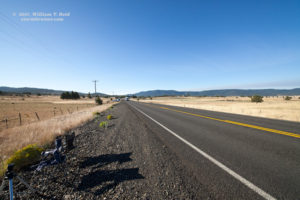
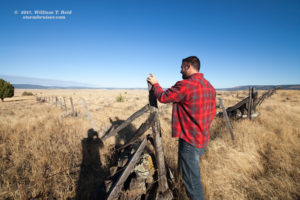
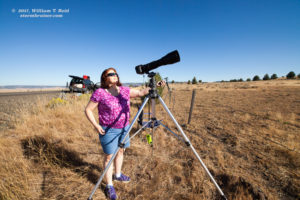
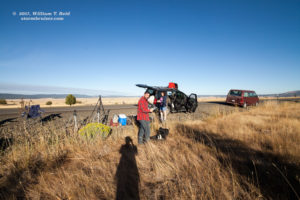
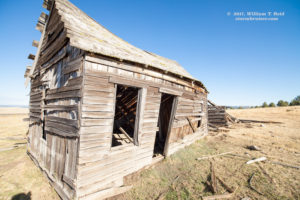
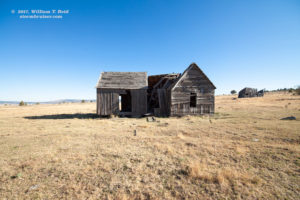
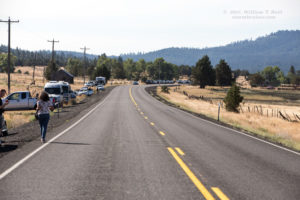
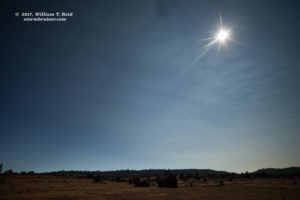
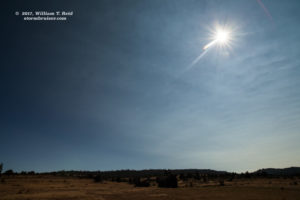
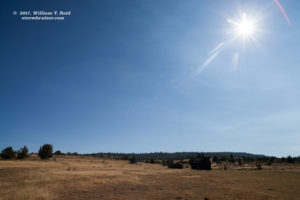
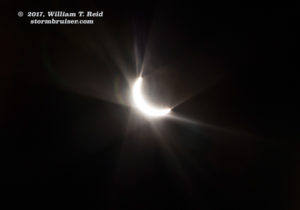
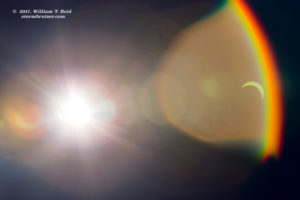
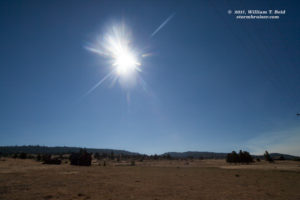
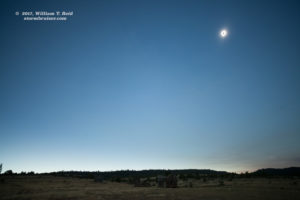
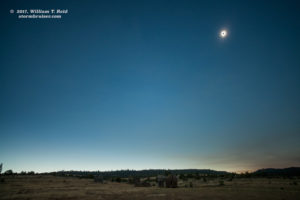
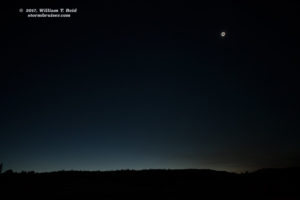
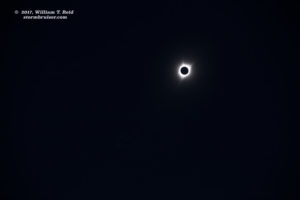
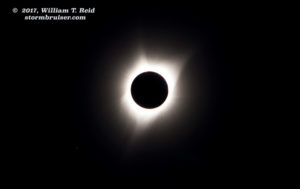
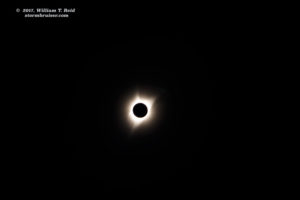
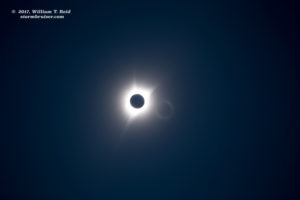
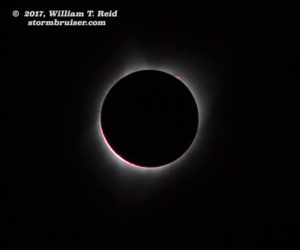
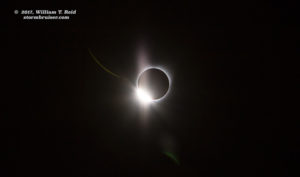
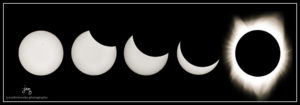
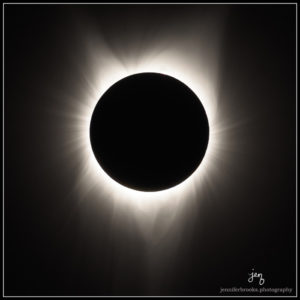
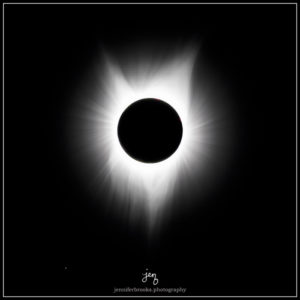
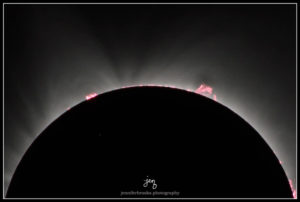
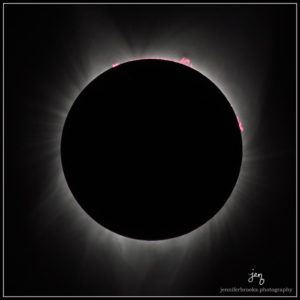
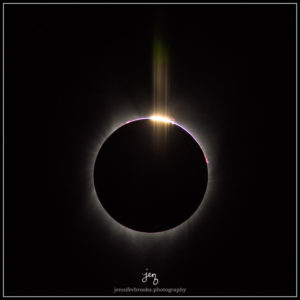
Leave a Reply
You must be logged in to post a comment.